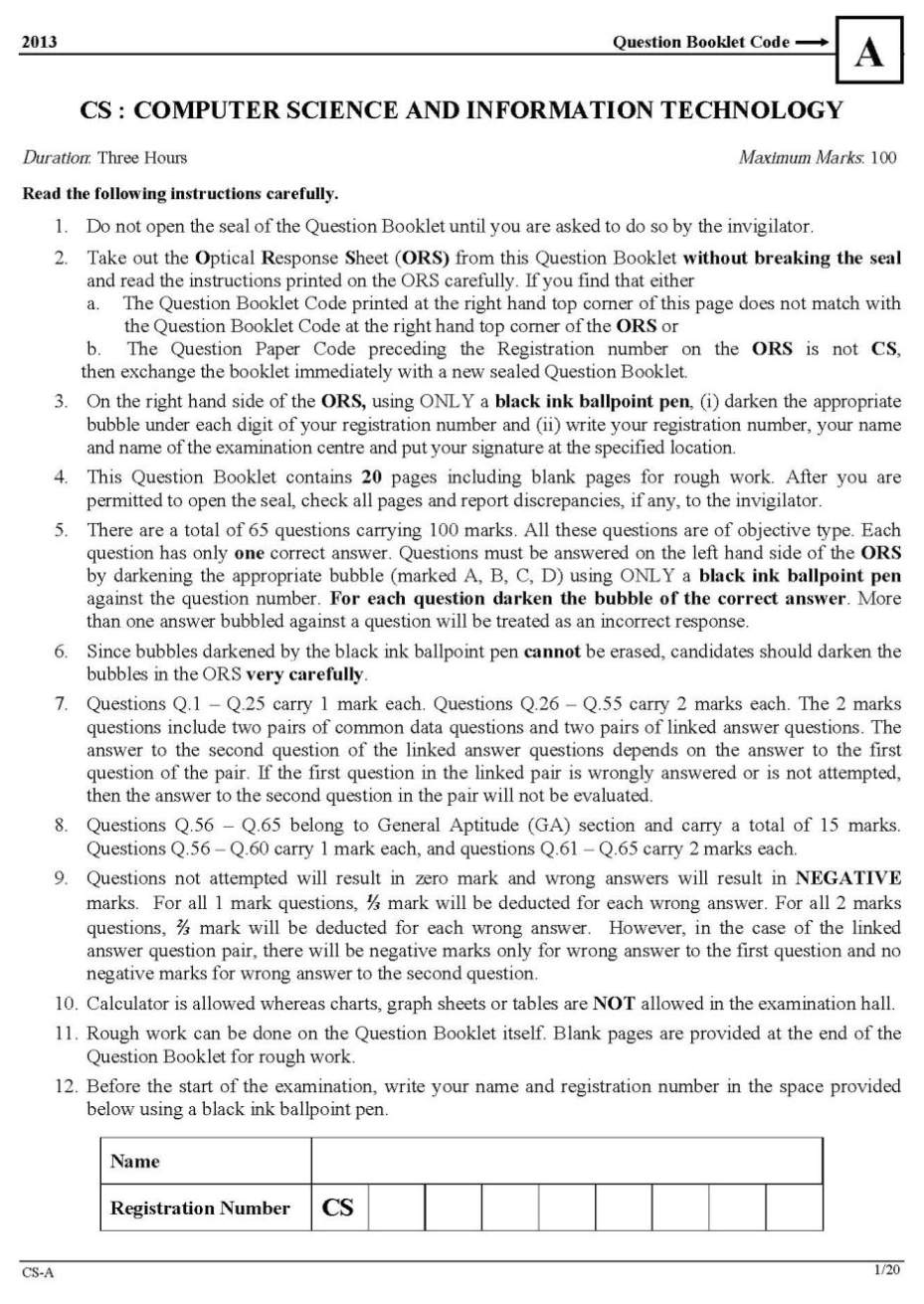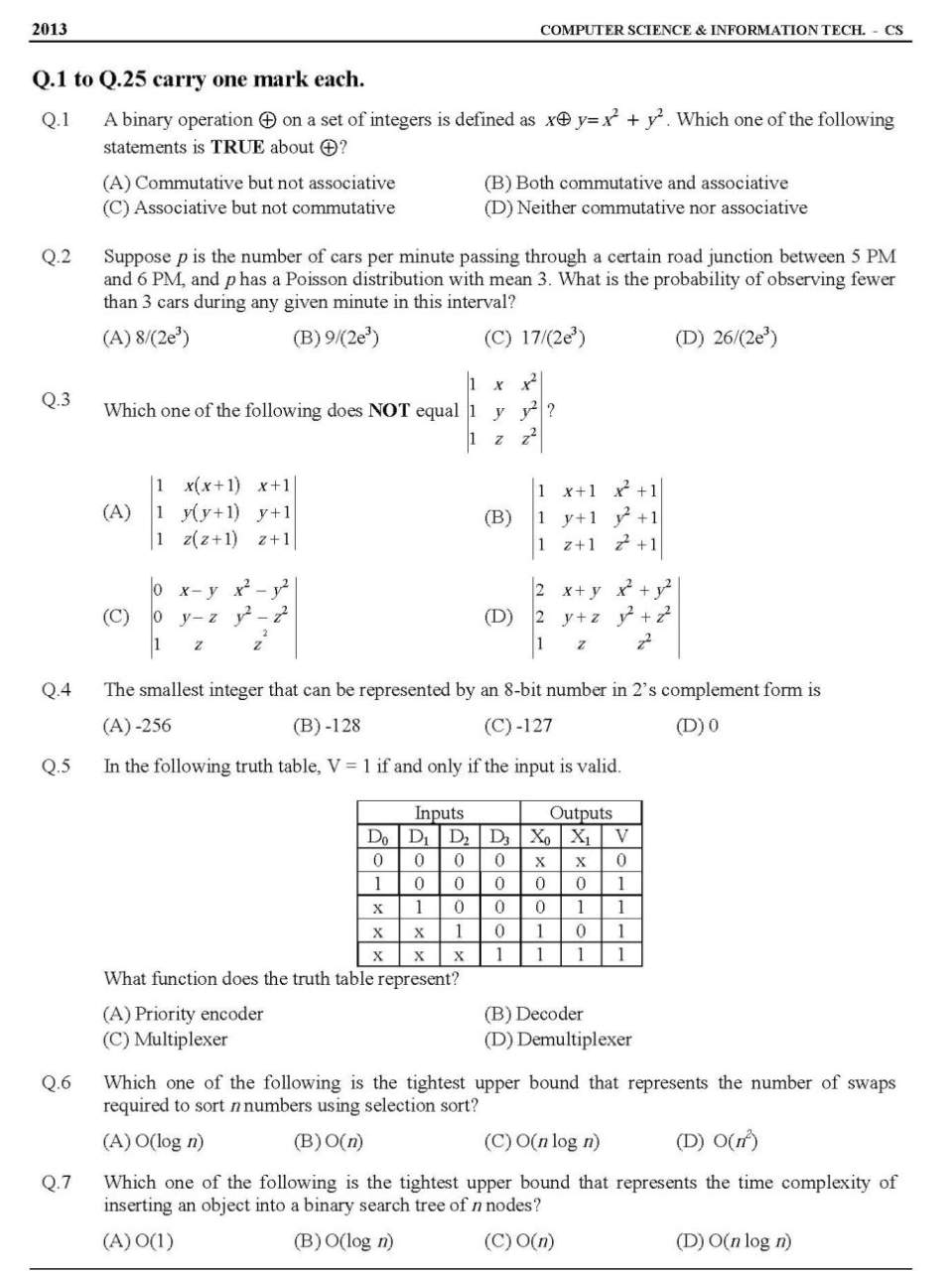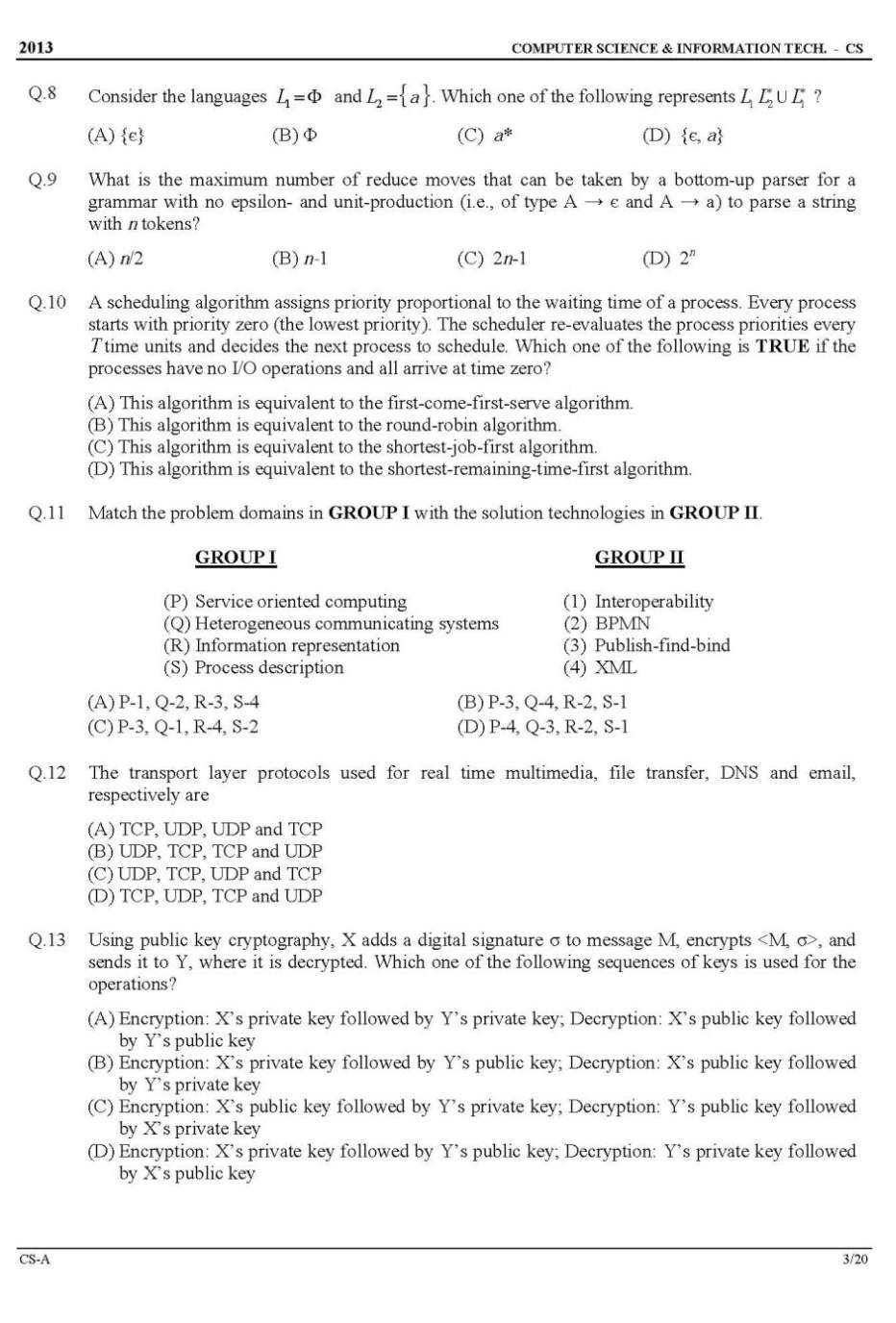|
#2
29th November 2014, 02:44 PM
| |||
| |||
| Re: CSIT question paper for SLET exam
Hi, as you want the question paper of CSIT for preparation of SLET exam of Tamilnadu so here I am providing you CSIT question paper Computer Science- An index is clustered, if (A) it is on a set of fields that form a candidate key (B) it is on a set of fields that include the primary key (C) the data records of the file are organized in the same order as the data entries of the index (D) the data records of the file are organized not in the same order as the data entries of the index Which of the following statements is/are FALSE’ 1 For every non-deterministic Turing machine, there exists an equivalent deterministic Turing machine 2 Turing recognizable languages are closed under union and cornplementation 3 Turing decidable languages are closed under intersection and coinpiementation 4 Turing recognizable languages are closed under union and intersection (A) I and 4 only (B) 1 and 3 only (C) 2 only (D) 3 only Suppose the instruction set architecture of the processor has only two registers The only allowed compiler optimization is code motion, which moves statements from one place to another whik preserving correctness What is the minimum number of spills to memory in the compiled code’ (B)l (C) 2 (D) 3 What is the minimum number of registers needed m the instruction set architecture of the processor to compile this code segment without any spill to memory’ Do not apply any optimization other than optimizing register allocation (A)3 (B)4 (C)5 (D)6 A binary operation ⊕ on a set of integers is defined as 2 2 y x y x + = Å . Which one of the following statements is TRUE about ⊕? (A) Commutative but not associative (B) Both commutative and associative (C) Associative but not commutative (D) Neither commutative nor associative The smallest integer that can be represented by an 8-bit number in 2’s complement form is (A) -256 (B) -128 (C) -127 (D) 0 Which one of the following is the tightest upper bound that represents the number of swaps required to sort n numbers using selection sort? (A) O(log n) (B) O(n) (C) O(n log n) (D) O(n2) Which one of the following is the tightest upper bound that represents the time complexity of inserting an object into a binary search tree of n nodes? (A) O(1) (B) O(log n) (C) O(n) (D) O(n log n)      Half question paper is in pdf file |